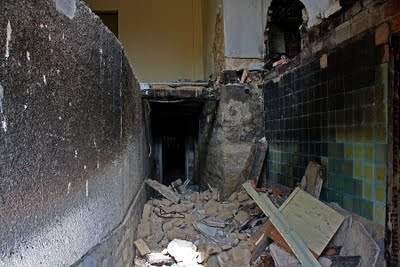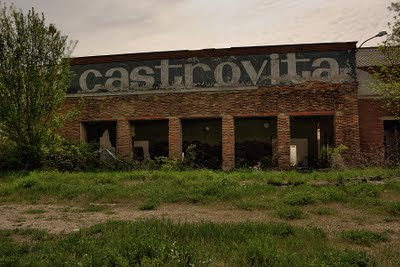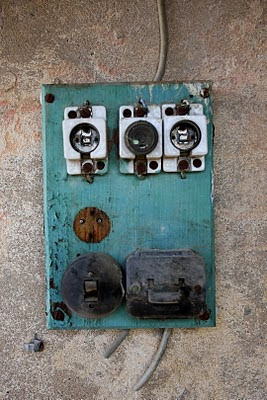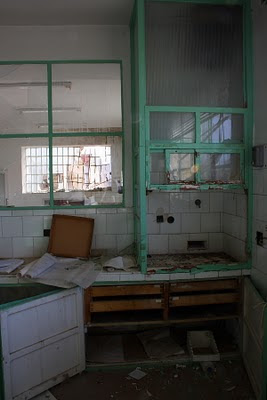This post is dedicated the the old Fuente Sayud spa, located in the minucipality of Castromonte (Valladolid), and the Castrovita bottling plant wich was built next to it.
The spa was open to the public until the 60´s, and the bottling plant continued its activity almost thirty years more. The high nitrite concentration in the water forced the sanitary authorities to shut down the plant, considering that mineral water unsafe for human consumption. Today there remains very little of what the plant was, mostly due to vandalism and copper thieves, the latter being an important worry in Spain.
Copper thieves are responsible from the collapsing of half of the 1st floor of the spa. We had visited the location a year ago, and although it was in a very bad condition the structure looked safe enough. But we didn´t expect what we found in our last visit...
Upon arrival we saw lots of Guardia Civil (policemen at the countryside and villages, more or less) seals all over the place, and soon we found out why. Thieves had burnt copper wires inside the spa, causing a fire which spread through the wooden structure of the building and destroyed half of the 1st floor.
This is an example of something sadly frequent in Spain, and that´s why we are reluctant to give the exact location of many places we visit. We want to state we are against this kind of things: we reject the theft of anything at abandoned places as much as the damage that causes.
The ground floor before and after the fire:
Welcome to the spa! A nice path lined with acacias, now neglected, is the access to the site.
The bottling plant was not very big. In fact, Castrovita water was not a very famous trade mark, and not many people outside the province of Valladolid missed it when it dissapeared. The roof was mainly built with AC-sheets, something very common since the 60´s until the 90´s. If you want an asbestos overdose, this ais a nice place to go.
Many bottles were scattered all over the place. Plastic bottles, glass bottles, still watter bottles, sparkling water bottles... Bottles everywhere. Talking about sparkling water, that is fairly rare in Spain. If you ask for water, you always get still water, and if you ask for sparkling water... well, good luck then, because it is a bit hard to find.
These plastic scales were used to make bottles. There can still be seen the paper sacks containing the scales.
These are the only traces of machinery remaining. The rest has been stolen.
After explring the bottling plant, we entered the spa building. There is not much recognizable, apart from the natural spring and some water basins.
At the basement we found the high room where the spring is. The room is high indeed, since it reaches from the basement to the roof, three floors away. Today it shows the damage caused by the fire, because it is the place where the thieves carried copper wires to burn them. This is how they remove the plastic insulation, leaving just the copper which can be sold at junkyards for an always rising price. Thieves found this great, well aired room perfect for their purpose. There are even some burnt copper remains.
In our first visit all the botthles scattered on the ground were still in their original cardboard boxes. To the left it can be seen a pile of bottles burnt due to the fire.
We went to the 1st floor, or what was left of it.
More bottles outside, now mostly glass bottles, heaped next to the spa building. This is how we ended our exploration, whith the bitter taste of seeing how a location has been destroyed not only by vandalism, but also by criminals.



















































































